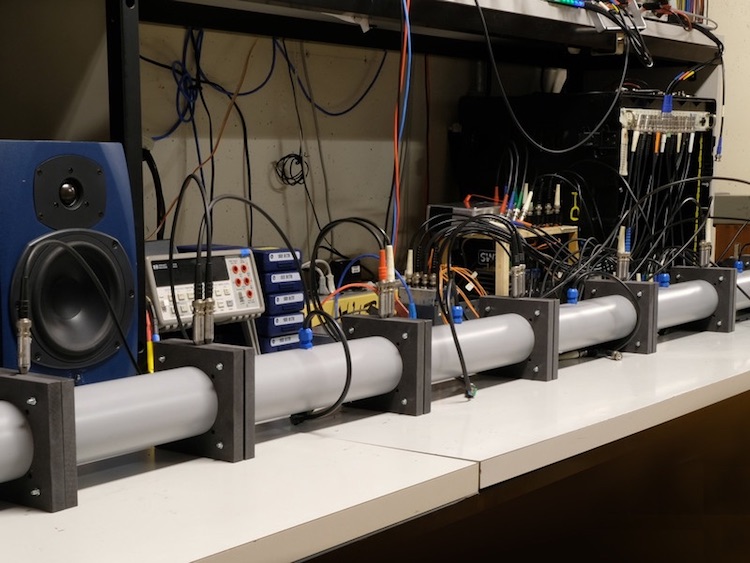- Researchers discovered a technique of levitating a magnetic bar while it spins in a fluid.
- This insight could aid in the design of bidirectional fluidic pumps and artificial swimmers.
Levitation is a method of suspending something in stable mechanical equilibrium against gravity with the help of electric, magnetic or acoustic fields. Finding simple and inexpensive techniques for stable levitation offers a wide range of applications.
Earnshaw’s theorem plays a key role in magnetic levitation: it states that one could make dipoles levitate by dynamically stabilizing them. This has already been achieved in maglev trains using superconductors, electromagnets and magneto-Archimedes effect.
Now, researchers at Nottingham Trent University (UK) have discovered a unique behavior that emerges from a combination of fluid and magnetic forces acting on a magnetic stir bar (what they call “flea”) as it rotates at high speed. The flea undergoes a transition from stable spinning to a stable oscillatory levitating mode.
How Does This Happen?
Researchers analyzed the behavior using a conventional magnetic stirrer that generates a spinning magnetic field, which rotates a flea (magnetic bar) inside a beaker filled with fluid.
They observed that the flea and magnetic field remained aligned at low rotation speeds. The poles of the magnet and flea were pointing in the opposite direction, generating a rotating field. This made the flea spin horizontally along the base of the beaker.
 Experimental setup showing the levitating flea | Courtesy of researchers
Experimental setup showing the levitating flea | Courtesy of researchers
However, as the rotational speed increases, the flea starts getting unaligned with rotating field due to viscous forces. This continues to happen until the magnetic force (that is spinning the flea) becomes repulsive, which forces the flea to move asynchronously and hop erratically off the beaker.
Researchers also noticed that at high-rotational pace, the flea oscillated in a disk-like pattern perpendicular to its axis. They used computer simulations to demonstrate that this oscillation balances the levitation motion of the flea in viscous fluids.
Reference: Physical Review Letters | doi:10.1103/PhysRevLett.121.064502
Also, this oscillation forced fluid away from the center of the flea, generating a centripetal force, which was responsible for holding the flea still. However, in low viscosity fluids, the oscillation attracted fluid toward the flea, putting it out of the steady state.
 Image credit: K. Baldwin / Nottingham Trent University
Image credit: K. Baldwin / Nottingham Trent University
By carefully examining simulations and experiments, researchers concluded that levitation is balanced by an asymmetric flow of fluid, steered by the eccentric swim stroke of the flea when it moves off axis.
It only happens at intermediate streaming Reynolds number — a dimensionless number that plays a key role in foreseeing the pattern in a fluid’s behavior — where the flow is pushed radically outwards: the flow changes direction and levitation becomes unsteady at higher streaming Reynolds numbers.
Read: Scientists Levitate Water Droplets Using Sound Waves To Detect Contaminants
Applications
According to the research team, this insight could aid in the design of bidirectional fluidic pumps and artificial swimmers. Furthermore, this novel combination of fluid flow and levitation may lead to new methodologies for dynamic viscosity measurements, or homogeneous surface treatment.


